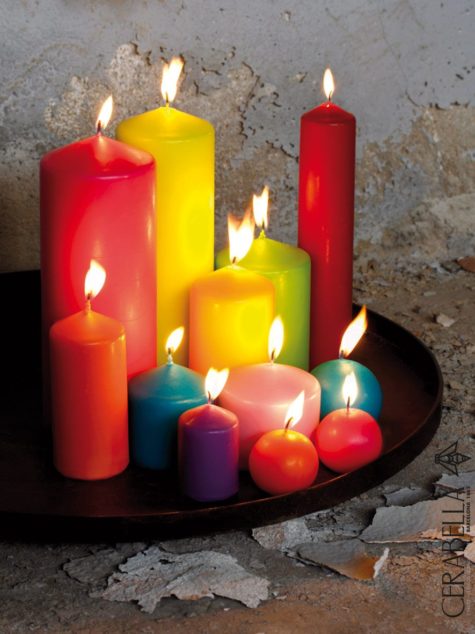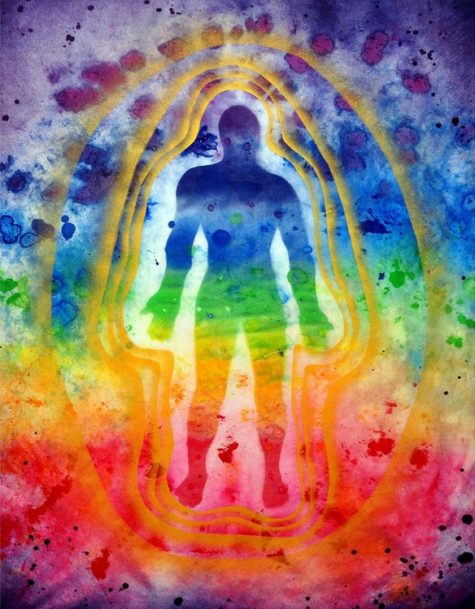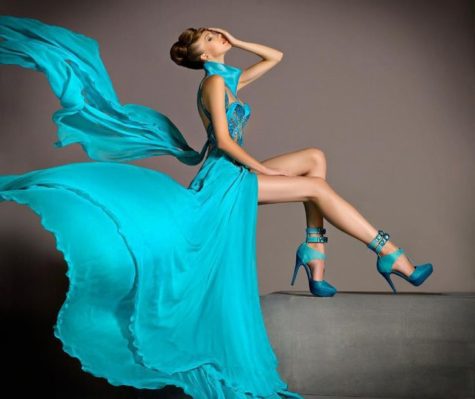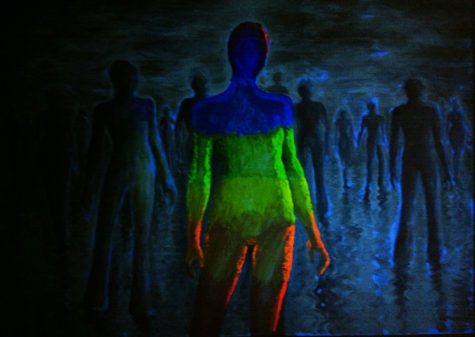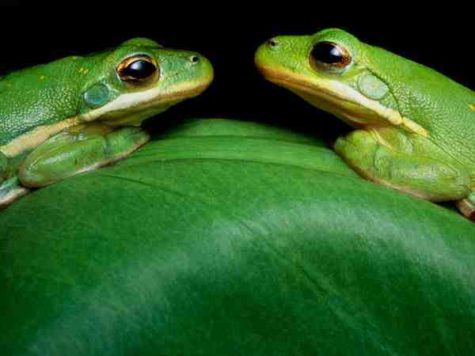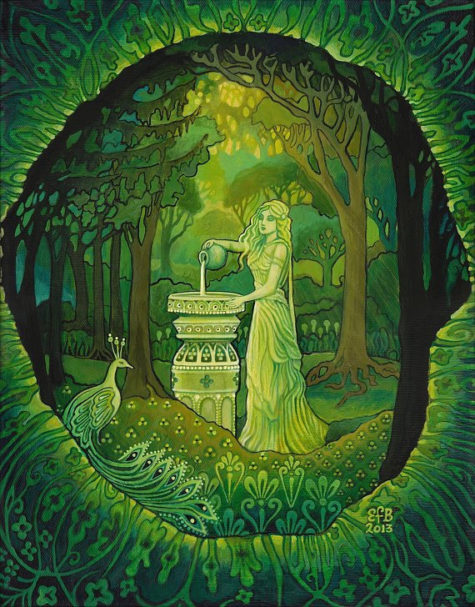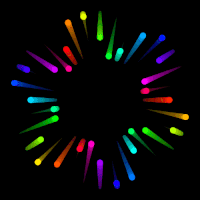Balance
Color Me What?
Color Therapy is an alternative style of therapeutic practice that utilizes the vibration and frequency of color to aid in healing. Are you in pain, feeling anxious, or fearful? Here is an exercise to help establish the color therapy protocol you need TODAY:
Sit with your eyes closed and visualize your situation.
Think of a color that soothes what you are feeling. Don’t worry if it takes a couple different examples, it is important to listen to your body and discover what works best for you. What is today’s color?
Take a deep breath and imagine pulling this color throughout your body. When you exhale, imagine the (anxiety, pain, fear, anger) leaving your body. Do this a few times until you to feel a shift in your body and begin to feel better.
Imagine a glass filled with liquid in your chosen color and drinking it down. That color is filling up your body…you begin to feel (calm, safe, happy, and any pain minimizing).
Continue visualizing your chosen color for 3 – 5 minutes. Thank this color and carry its energy with you for the rest of the day.
Remember any color’s energy is available to you whenever it is needed.
From: Balanced Women’s Blog
Super Rainbow Candle Healing
Candle therapy can be used to unite the powers of mind, body, and spirit. Lighting a colored candle releases energy into the atmosphere. The color vibration is absorbed into the auric field and transmitted into the physical body. It is an interesting fact that the colors of our seven major chakras are also the rainbow colors.
The following exercise called, Super Rainbow Candle Healing:
Place a candle for each of the seven chakra colors in a semi-circle in front of you starting from left to right (red, orange, yellow, green, light blue, indigo, and purple). The candles can be placed on the floor or on a table.
Sit quietly for a few moments in order to prepare yourself to receive. Light the candles, starting with red (Root Chakra) and ending with purple (Crown Chakra).
Beginning with the central green candle (Heart Chakra), gaze upon each flame for one minute at a time. Then move to the red candle at the left followed by the purple candle on the right. Continue by going to the orange then to the indigo. Complete the process by going to the yellow and finishing with the light blue. This will take seven minutes.
While the rainbow candles remain burning, embrace all the colors. Accept the guidance from your higher-self as to which colors need revisiting. Continue for another ten minutes, finishing with the green candle (Heart Chakra) to balance your system.
Extinguish the candles in order starting with the red ending with purple (It is recommended to use candle snuffer or home-made tin foil cone). In candle healing it is suggested not to use your breath to blow out healing candles.
Sit quietly for three minutes with your eyes closed, to complete healing.
Sources:
- The Complete Book of Color Healing
- Balanced Women’s Blog
Rainbow Healing
Sit in a comfortable chair. You will only need to practice this visualization technique for 3 to 5 minutes in the beginning. Once you are comfortable with the technique and know which color you need, you can individualize the color and work with only one at a time.
Breathe deeply and evenly, feeling the cleansing power of oxygen permeating your body’s cells as you inhale, and the release of carbon dioxide waste as you exhale. Conscious, deep breathing cleanses the blood and cells of the body.
Visualize the Crown Chakra (at the top of your head) and begin to imagine it opening as though it were the lens of a camera. Ask the Universe for all the color rays of rainbow energy to flow down through this chakra. These rainbow colors are the red, orange, yellow, green, rose, blue, indigo, violet, silver, gold, white, and black rays. There is also ultra-red and ultra-violet. State your intent for healing, then invite the colors to flow from the Universe and go to where each color is needed.
Visualize them entering your bloodstream through the arteries and the cells of your entire body. This only takes a few moments to move throughout your body.
If you have a specific problem you wish to work on, ask for the colors to infuse that particular area of the body. The body listens to every thought you think, so just by stating what you want, it will happen. This thought/body connection is very important to know, because your every negative thought makes negative things occur, and every positive thought you have, takes the body to higher levels of consciousness.
When completing this exercise, you will feel more balanced. Remember to drink plenty of water and continue practicing color healing visualization.
Found at: Balanced Women’s Blog
Using Turquoise
Turquoise helps to open the lines of communication between the heart and the spoken word. It presents as a friendly and happy color enjoying life.
In color psychology, the color turquoise controls and heals the emotions creating emotional balance and stability. In the process it can appear to be on an emotional roller coaster, up and down, until it balances itself.A combination of blue and a small amount of yellow, turquoise fits in on the color scalebetween green and blue. It radiates the peace, calm and tranquility of blue and the balance and growth of green with the uplifting energy of yellow.
Turquoise recharges our spirits during times of mental stress and tiredness, alleviating feelings of loneliness. You only have to focus on the color turquoise, whether on a wall or clothing and you feel instant calm and gentle invigoration, ready to face the world again!
Turquoise is a great color to have around you, particularly in an emergency, as it helps with clear thinking and decision-making. It assists in the development of organizational and management skills. It influences rather than preaching and demanding.
The color turquoise is a good color to aid concentration and clarity of thought for public speakers as it calms the nervous system, gives control over speech and expression, and builds confidence. Print your speech notes on turquoise and every time you glance down you will feel the effects of the color.
Turquoise heightens levels of creativity and sensitivity. It is good at multi-tasking, becoming bored if forced to focus on one thing only. Sometimes its thinking can become scattered if surrounded by too much of this balancing color.
Turquoise encourages inner healing through its ability to enhance empathy and caring. It heightens our intuitive ability and opens the door to spiritual growth. It is the color of the evolved soul. Many meditations can begin with visualizing a pool of Turquoise water to gaze in or even to imagine diving into to receive messages from Dolphin and the Ocean Spirits.
Turquoise can also be self-centered, tuning in to its own needs above all others. At the same time, it can help us to build our self-esteem and to love ourselves, which in turn supports our ability to love others unconditionally. At its most extreme it can be boastful and narcissistic.
Although turquoise is self-sufficient, it fears being alone and can become aloof and unapproachable when this occurs, making the situation worse.
Turquoise has strong powers of observation and perception and can be quite discriminating. It has the ability to identify the way forward, the way to success, balancing the pros and cons, the right and wrong, of any situation. It is a good color to use when you are stuck in a rut and don’t know which way to move.
Turquoise can sometimes be impractical and idealistic and remote from emotional reactions, appearing excessively cool, calm and collected.
Positive and Negative Traits of Turquoise:
- Positive keywords include communication, clarity of thought, balance and harmony, idealism, calmness, creativity, compassion, healing and self-sufficiency.
- Negative keywords include boastfulness, secrecy, unreliability and reticence, fence-sitting, aloofness, deception and off-handedness.
Loving turquoise:
If this is your favorite color, you are friendly and approachable, easy to communicate with. You are compassionate, empathetic and caring. You have a heightened sense of creativity and sensitivity. You speak from the heart and love sharing your inner most thoughts.
Not loving turquoise:
A person who has an aversion to turquoise may be looking for solidity and security in society, especially in marriage. Also, may be reluctant to think originally or to walk new paths.
Wearing turquoise:
Tints of turquoise color have a sweet feminine feel. Darker shades of turquoise, such as teal have a more sophisticated feel. Variations of turquoise, are often used to represent water. This color is also is referred to as aqua and aquamarine. Wear turquoise jewelry to give yourself confidence and strength.
The Color Turquoise Represents
Communication:
Turquoise represents open communication from and between the heart and the spoken word. It relates to the electronic age and the world of computers, and communication on a large scale.
Emotional Control:
Being the mid color between the extremes of red and violet, turquoise is the color of balance, for the emotions, thoughts and speech.
Self-Sufficiency:
Turquoise has the ability to tune into its own needs and find the way to success.
Effects of the Color Turquoise
Clarity of Thought:
Turquoise enhances the ability to focus and concentrate, assisting with clear thinking and decision-making, and the development of good organizational skills.
Calming:
Turquoise is calming yet invigorating, restoring depleted energies.
Non-emotional:
A negative effect of turquoise is that it can cause people to be too aloof and to hide their emotional reactions.
Light Starvation
“Light is a nutrient much like food,and like food,
the wrong kind can make us ill, and the right kind can keep us well.”
Humans need light of specific intensity and color range to regulate their internal biological clock. Without it, our daily, monthly and annual rhythms become disrupted. A lack of sunlight can lead to ill health with a variety of mental, emotional, and physical symptoms.
How does “light starvation” or “Malillumination” happen?
Working and living indoors: Poorly illuminated environments with inappropriate artificial lighting could have serious health implications. For example, most artificial indoor lighting lacks ultraviolet light (UV), which at the proper intensity is essential to the production of vitamin D and the metabolism of calcium.
Unhealthy artificial light: Most indoor lighting lacks the requisite full-range color distribution and the proper intensity to sustain health and certain functions, such as vitamin D and hormone production. Light’s effect on human mind body health has, until recently, been ignored in architecture, design, and engineering. Both fluorescent and incandescent lights have lots of Red, but are lacking in Green, Blue and Violet. Furthermore, indoor lighting is generally not bright enough, amounting to only 1/20th the intensity of outdoor light in the shade on a sunny day. The amount of light that we receive from 16 hours indoors is dramatically less than the amount we receive from a single hour outdoors.
Negative lifestyle habits: Even in sunny California and Florida, the average individual receives little sunlight in a 24-hour period. The additional interferences we have, such as tinted sunglasses and contact lenses, tinted car windshields, and tinted windows, don’t allow in the health-giving properties of the entire spectrum of light.
Seasons/low light conditions: In winter in the northern hemisphere, the onset of winter depression and seasonal affective disorder (S.A.D.) occurs in late fall and peaks in February. (These symptoms usually wane in early spring, as the days get longer.)
The Symptoms of Light Starvation:
- Irritability
- Fatigue Increased illness – due to lowered immune function
- Insomnia
- Hypersomnia – sleeping too much
- Depression
- Alcoholism
- Suicide
- Vitamin D deficiency
- Calcium deficiency
- A disturbance of bodily rhythms such as SAD, winter depression and other phase shift disorders.
What Light Nourishes:
Light enables us to see, and it plays several vital roles as it enters our eyes and our skin. Light enters the pineal gland (the body’s light meter) via the retina. Its neurotransmitter, melatonin, influences the hypothalamus, which is responsible for controlling many of the endocrine functions that are disturbed in depressed individuals such as sleep and wakefulness, reproductive physiology, mood, and the timing of the biological clock.
Sunlight shining on the skin triggers the production of melanin, a dark pigment that protects the surface of the body. As UV rays from the sun penetrate the skin’s surface layer of melanin, the body’s supply of vitamin D is replenished. Vitamin D is known as the “sunshine vitamin”, and although vitamin D can be obtained from milk and fish, this form is not as biologically effective as the vitamin D produced by sunlight.
Vitamin D3 is a skin hormone called solitrol, which works in conjunction with the pineal hormone, melatonin, to control the body’s response to light and darkness. Solitrol works antagonistically with the melatonin to produce changes in mood and our 24 hour bodily rhythms, as well as affecting our immune system.
Vitamin D enters the blood stream and goes to the kidneys and liver where it plays a key role in the absorption of calcium from foods, as well as the utilization of the mineral phosphorus. Nutritionally oriented physician Dr. Elson Haas states that since vitamin D is intimately related to the metabolism of calcium and phosphorus, it is important to the growth and development of bones and teeth in children. Dr. Haas adds that D3, because of its effect on calcium levels, is important in the maintenance of the nervous system, heart functioning, and blood clotting.
Using The Color Violet
Look at us, said the violets blooming at her feet, all last winter we slept in the seeming death but at the right time God awakened us, and here we are to comfort you. ~Edward Payson Rod
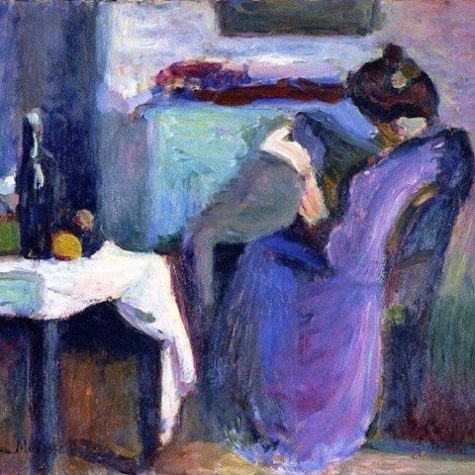 Wearing Violet:
Wearing Violet:
Violet is often worn by people predisposed toward psychic matters, and is the perfect symbol of the “higher” mind, combining as it does the earthy, fieriness of red with the cool reasonableness of blue to forge an entirely different hue.
Absolutely wear violet when:
- You wish to make positive changes in your life and when you are looking for a purpose
- When you wish to feel special and unique and show other people that you are a non-conformist
- When you want to eliminate anger, destructive attitudes and addictions
Do not wear violet under the following conditions:
- If you suffer from depressive disorders
- If you are absent-minded and daydreaming
- If you feel stuck in any kind of grief
An Overdose of Violet:
Excess violet may be overpowering and suppress inner feelings and emotions, especially anger. It may also cause a sense of disquiet. You should always balance it with yellow!
Put some violet in your life when:
- You wish to re-balance your life
- There is a need to speed up the natural healing of the body.
- You have a desire to use your imagination to its fullest, and apply that imagination in practical ways.
- You wish to integrate new skills into every day life.
- There is a desire to remove obstacles.
- You have a need to calm over activity.
Questions to ask yourself when drawn to violet:
- Is there a need for self healing?
- What are you sacrificing to appear as a “good” or “helpful” person?
Ways to use violet:
- Violet is a great color to use in rooms where you practice relaxation and meditation techniques, as well as in spaces intended for introspective and contemplative thinking such as studios, libraries, bedrooms, verandas, and gardens.
- Violet stimulates blood flow to the brain, and it can be used to enhance intuition, imagination and creativity. When creating and composing his operas, Richard Wagner surrounded himself with this amazing color.
- Violet can be also very helpful for those suffering from insomnia or stress. Adorning your home with flowers like violets, lavender, lilacs, and orchids, or wearing gems such as amethyst, purple fluorite, sugulite, lepidolite, and charoite, will help you eliminate worries and doubts, and achieve inner balance and mental peace.
- Violet is also used to alleviate migraines. Crystal healers suggest placing an amethyst on the center of the forehead to relieve pain.
- Violet is also a good appetite suppressant. Eating more violet foods such as eggplants, purple cabbage, grapes, blueberries, and blackberries, will help you relax and keep hunger at bay.
- Wearing violet clothes or violet night gowns will help you become more calm, intuitive, creative and contemplative!
Loving violet:
Not loving violet:
Note: This post was compiled by Shirley Twofeathers for Color Therapy, you may repost and share without karmic repercussions, but only if you give me credit and a link back to this website. Blessed be.
Using Green
He had that curious love of green, which in individuals is always the sign of a subtle artistic temperament, and in nations is said to denote a laxity, if not a decadence of morals. ~ Oscar Wilde
Put green in your life when there is:
- A feeling of restriction caused by circumstances such as being housebound or confined.
- A need to let change happen, but also a fear of the unknown.
- A feeling of being trapped by other people’s rules and regulations and a need to break rigid patterns.
- A need for new ideas.
- A need for a new state of balance.
- A problem with personal relationships, especially with over-dominance and subservience.
- Green balances the emotions, calms, soothes nervous exhaustion, (use in moderation).
- Feng Shui claims that green eases absent-mindedness, nervousness and rudeness.
Loving green:
Green is a nice-person color, a “do-gooder, be-gooder” kind of color. This person has a warm heart. Passion is probably in there somewhere, buried under integrity and honor. If you love green, you put the greater good before your own good – try a little selfish behavior once in a while.
Green brings peace, rest, hope, comfort and nurturing, calmness and harmony. Interest in nature, plants, fellowmen, children and animals, health and healing, natural and plain life. Longing for a safe home and family-life. A dislike
of conflicts.
Not loving green:
A person who has an aversion to green may be more interested in independence and self-development than in a warm family-life. May prefer to keep a certain distance in (sexual) relationships.
Wearing green:
Wear green when you want to overcome a sense of thwarted ambition. Green says growth – balance – harmony. It is a color of healthy relationships.
Questions to ask yourself when drawn to green:
- Is there a need for space to gain fresh perspective?
- What is restricting you?
- Is there a situation or circumstance that is limiting or stopping your growth?
Note: This post was compiled by Shirley Twofeathers for Color Therapy, you may repost and share without karmic repercussions, but only if you give me credit and a link back to this website. Blessed be.
Healing With The Color Green
Absolute green is the most restful color, lacking any undertone of joy, grief, or passion. On exhausted men this restfulness has a beneficial effect, but after a time it becomes tedious. ~Wassily Kandinsky
Overview:
Green is the color of the heart chakra. It has a calming effect, especially in inflamed conditions of the body. It is soothing to the nervous system. It is a great healer. It builds muscles, bones and other tissue cells. Its complement is magenta.
Green is cooling, soothing, and calming both physically and mentally. If you are exhausted, green initially has a beneficial effect, but after a time, it becomes tiring. Green acts upon the sympathetic nervous system. It relieves tension in the blood vessels and lowers the blood pressure. It acts upon the nervous system as a sedative and is helpful in sleeplessness, exhaustion, and irritability.
Green strongly affects the heart chakra, and it is balancing to the autonomic nervous system. It can be applied beneficially in cardiac conditions, high blood pressure, ulcers, exhaustion, and headaches. Green harmonizes, life-giving, calms the mind, nerves, fever, and acidity; balances the metabolism, stabilizes the weight, tones liver and spleen; and benefits the pituitary gland.
Healing with the color green:
- Green stimulates growth and is good for helping heal broken bones.
- Green is a muscle and tissue builder.
- Can dramatically assist with easing pain, promotes rapid healing of all kinds.
- Green is a disinfectant, germicide, antiseptic and bacteriocide.
- Green is used during pregnancy and labor because of its soothing and healing properties.
- Green provides an essential nourishment for the body, the spirit and the heart.
- Green is an aphrodisiac and a sex tonic.
- Helps the digestive system, relieves tension.
- It is good for shock and anxiety.
- Green dilates the capillaries and produces a sensation of warmth.
- A calm green light is an excellent remedy for headache and neuralgia.
- Green affects blood pressure and all conditions of the heart. Helps control the blood pressure (light green for high blood pressure and dark green for low blood pressure).
- Green helps with relaxation and can be effective for insomnia.
- Assists with healing past trauma and eases the impact of troubled memories.
- The olive green shade can help us work positively with our emotions, olive is cleansing and disinfectant, it can be used to heal and soothe, to regenerate and to gain awareness and understanding of situations.
- Green has both an energizing effect and a moderating or soothing effect.
- It cures hormonal imbalances.
- Stimulates growth hormone and rejuvenation.
- Cleans and purifies from germs, bacteria and rotting material.
- Harmonizes the digestion, stomach, liver, and gall bladder.
- Has a healing effect on kidneys.
- Increases immunity.
- Builds up muscles, bones and tissues.
- Stimulates inner peace.
- Strengthens the nervous system.
- Green in any form is one of the finest tonics for tired nerves. The shade or chroma should be bright and clear, but much will depend on individual preferences.
Specific treatments and recommendations using green:
- For low blood pressure focus the green light over the heart for half an hour treatments and drink the green solarized water at hourly intervals between meals in half a glass dosages. Eat freely of green salads.
- For high blood pressure follow the same treatment but use a paler green color.
- Neuralgic headaches are often relieved by just looking at the green light.
- Sitting in green light for an hour at a time will refresh exhausted nerves and aid in optimistic thinking.
- Ulcers can be relieved by the green ray treatment given over a long period of time. As they are caused by fear, anger, criticism and antagonism, the opposite of these emotions built in through the use of compassionate green will heal them.
- Influenza requires both the green and blue light treatment, as do mucus fevers, whooping cough and croup.
- Colds in the head yield to green solarized water and green light, sometimes with the help of indigo.
- Green can be used as an aphrodisiac and sex tonic. It is very useful in stimulating sex glands and will be found equally helpful to men and women. It is the color of youth, the springtime of the year when vegetation shows its greatest growth and vigor.
Contra-Indications:
- Too much green can deepen depression and social withdrawal in some who are already so inclined.
- Some people caution that green should not be used in treatment of cancer because of its association with growth.
- It is not to be used where there is anemia or lack of vitality.
Note: This post was compiled by Shirley Twofeathers for Color Therapy, you may repost and share without karmic repercussions, but only if you give me credit and a link back to this website. Bright Blessings.
The Color Green
Green how I want you green. Green wind. Green branches.
~ Federico Garcia Lorca
Green is the color of growing grass and leaves, of emeralds, and of jade. Green is the color most commonly associated with nature, the environmental movement, Ireland, Islam, spring, hope and envy. Green is a soothing
refreshing color associated with the Heart Chakra. Green is about growing, expanding, and living – it’s no coincidence that our money is green.
Green is the color of Nature, and the keynote of our planet Earth. Man’s first environment was a garden. The green radiance is essential to our health and happiness. As the color of nature and vegetation, it has a soothing, harmonious radiation that is essential for the well-being of our nerves, and the proper functioning of the body. Green pastures and fresh air are indeed a wonderful aid in recuperation of health, and it seems in line with this that the leaves of the Tree of Life are used for healing. As a color of earthly, perceptible growing things, it represents the field of sensation, and also the victory of life over death, as in spring. Fertility of the fields; immediate natural life.
Green helps to restore balance and equilibrium. Walking through woodland where the light is predominantly filtered through green leaves creates a sense of calm in the emotions and an expansive increased sense of connection with our surroundings.
Green is the great healer. It is neutral to the other colors and serves as a general tonic and neutralizer. When in doubt, use green. It is a calming color and has a neutral effect on the human nervous system.
Studies have shown a decrease in blood pressure, pulse rate, and breathing rate when people are exposed to green light. Green is the easiest color on the eye and can improve vision.
Note: This post was compiled by Shirley Twofeathers for Color Therapy, you may repost and share without karmic repercussions, but only if you give me credit and a link back to this website. Bright Blessings.
The Color Orange
“It’s different and bold. It stands out amongst a blank world of black, white, and gray. Orange is the early morning sun stretching across the sky and the color of a burning ember standing tall in the middle of a beach bonfire. It’s leaves in the fall, carrots in Nana’s vegetable soup on a cold winter day, tulips in the spring, and the ladybugs in the middle of the grassy park on a hot summer afternoon. Orange is life. It’s unexpected but beautiful.”
― Aly Martinez
Orange has two aspects that we see time and time again, pivoting between the material and spiritual worlds, which is not surprising given that the color itself is a balance between red and yellow. As such, it represents the second (sacral) chakra.
Orange is a vibrant, cheerful color that definitely lifts the spirits. Next to red, it is the color most popular for extroverts, and as a symbol of activity. In Europe and America, orange is commonly associated with amusement, the unconventional, fire, activity, danger, taste and aroma, the autumn season, and Protestantism. In Asia, it is an important symbolic color of Buddhism and Hinduism.
Orange creates balance. In times of stress, or after a shock or a surprise, wearing shades of orange can help the body to return to a state of balance. Orange will have a gentle warming effect if used lightly.
Curiosity is one of the driving characteristics of the orange vibration and this brings exploration and creativity, particularly on a practical level. In terms of subtle bodies, it is linked to the mental body in both its logical and conceptual form.
In marketing psychology, orange is used to make an expensive product seem more affordable and has been used to indicate that a product is suitable for everyone.
Orange is as sensual as it gets. Orange is a mellowed red – and it takes primal, lusty urges and mellows them with a softer vibe. Orange is the color of early attractions, emotional responses, and inner magnetism. It is also close to gold, the color of success and wealth.
Note: This post was compiled by Shirley Twofeathers for Color Therapy, you may repost and share without karmic repercussions, but only if you give me credit and a link back to this website. Blessed be.

